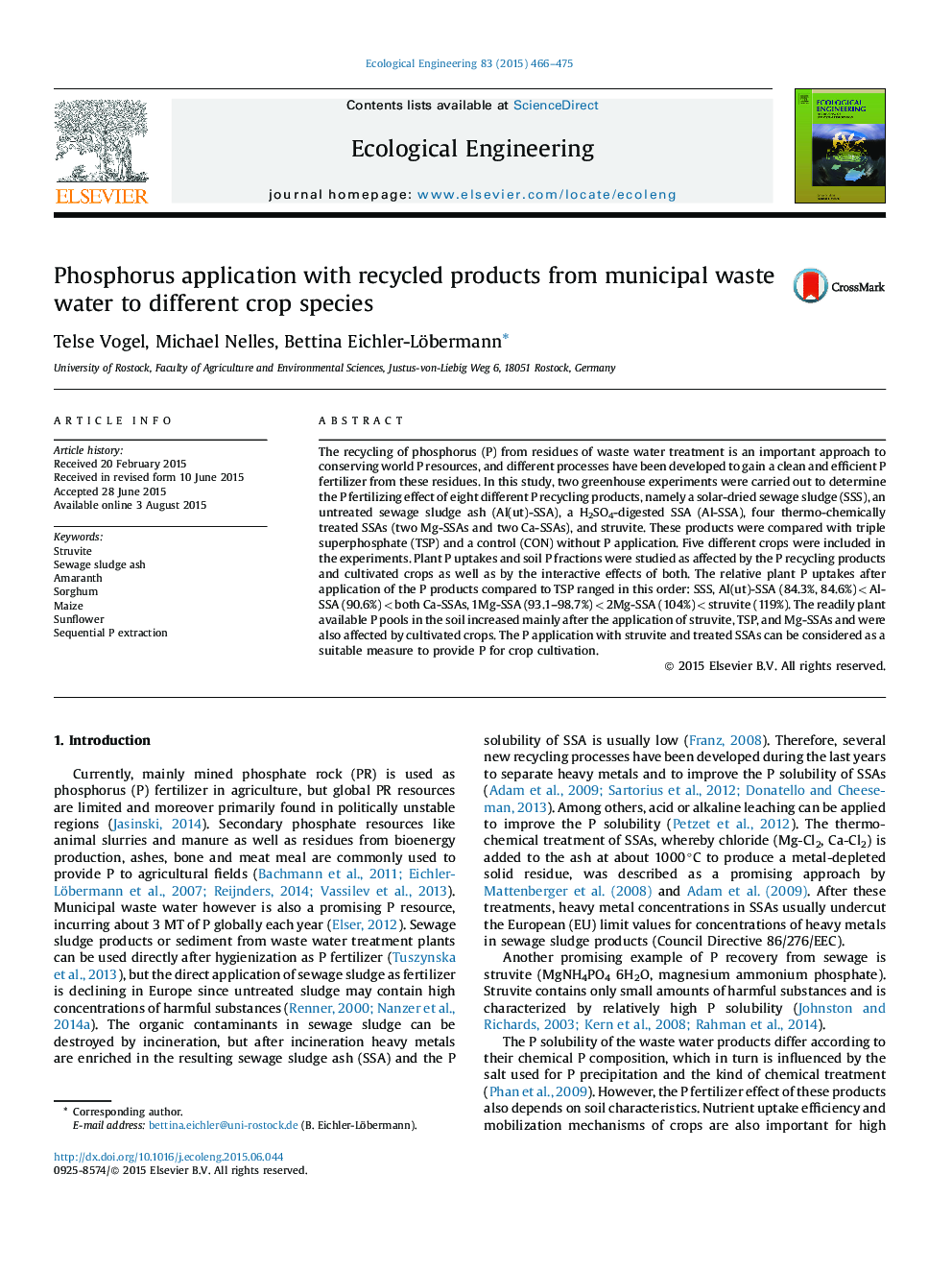| Article ID | Journal | Published Year | Pages | File Type |
|---|---|---|---|---|
| 4388898 | Ecological Engineering | 2015 | 10 Pages |
•The fertilizer values of struvite and sewage sludge products were evaluated.•Selected sewage sludge ashes (SSAs) were thermo-chemically treated.•Struvite increased the P uptake of the tested monocot and dicot crops at most.•The soil P-fractions were affected by application of the products and cultivated crops.•Struvite and a treated Mg-SSA raised the high soluble P-fractions in soil at most.
The recycling of phosphorus (P) from residues of waste water treatment is an important approach to conserving world P resources, and different processes have been developed to gain a clean and efficient P fertilizer from these residues. In this study, two greenhouse experiments were carried out to determine the P fertilizing effect of eight different P recycling products, namely a solar-dried sewage sludge (SSS), an untreated sewage sludge ash (Al(ut)-SSA), a H2SO4-digested SSA (Al-SSA), four thermo-chemically treated SSAs (two Mg-SSAs and two Ca-SSAs), and struvite. These products were compared with triple superphosphate (TSP) and a control (CON) without P application. Five different crops were included in the experiments. Plant P uptakes and soil P fractions were studied as affected by the P recycling products and cultivated crops as well as by the interactive effects of both. The relative plant P uptakes after application of the P products compared to TSP ranged in this order: SSS, Al(ut)-SSA (84.3%, 84.6%) < Al-SSA (90.6%) < both Ca-SSAs, 1Mg-SSA (93.1–98.7%) < 2Mg-SSA (104%) < struvite (119%). The readily plant available P pools in the soil increased mainly after the application of struvite, TSP, and Mg-SSAs and were also affected by cultivated crops. The P application with struvite and treated SSAs can be considered as a suitable measure to provide P for crop cultivation.
